Consider the potentiometer circuit arranged as in figure. The potentiometer wire is 600 cm long . If the jockey toches the wire at a distance 560 cm from A, calculate the current through the galvanometer.

3E22r
Topper's Solved these Questions
- CURRENT ELECTRICITYBook:AAKASH INSTITUTEChapter:CURRENT ELECTRICITYExercise:ASSIGNMENT SECTION-J
Explore 10 Videos
- CURRENT ELECTRICITYBook:AAKASH INSTITUTEChapter:CURRENT ELECTRICITYExercise:ASSIGNMENT SECTION-H ( MULTIPLE TRUE-FALE TYPE QUESTIONS)
Explore 5 Videos
- COMMUNICATION SYSTEMS Book:AAKASH INSTITUTEChapter:COMMUNICATION SYSTEMS Exercise:ASSIGNMENT SECTION D (Assertion-Reason)
Explore 10 Videos
- DUAL NATURE OF RADIATION AND MATTER Book:AAKASH INSTITUTEChapter:DUAL NATURE OF RADIATION AND MATTER Exercise:ASSIGNMENT (SECTION-D)
Explore 10 Videos
Similar Questions
You have a microammeter which reads 50μA at full scale deflection and the coild in the meter movement has a resistance of 20 ohms. By adding two resistors , R1 and R2 and a 1.5 volt battery you can convert this into an ohmeter. When the two outcoming leads of this ohmeter are connected together , the meter is to register ohms by giving exactly full-scale deflectio. When the leads are connected across an unknown resisance R, the deflection will indicate the resistance value,if the scalse is appropriately marked . In particular , we wan half scale deflection to indicate 15 ohms. What values of R1 and R2 are required , how should the connections be made ?
View SolutionConsider the following three statmenet for a current carrying conductor of non-uniform cross-section.
STATEMENT-1 : Current density at any cross -section of the conductor is proportional to electric field at the cross-section.
STATEMENT-2 : If temperature of the conductor is increased, relaxation time of drifting electron decreases.
STATEMENT-3 : Electrons in the conductor flow from low potential to high potential.
View SolutionSTATEMENT 1 : The audio frequency signals (20 Hz to 20 kHz) cannot be transmitted without distortion over long distances
STATEMENT-2: Noise has its greatest effect when the signal is weak
View SolutionA : Every metal has a definite work function , still all photoelectrons do not come out with the same energy it incident radiation is monochromatic .
R : Work function is the minimum energy required for the electron in the highest level of conduction band to get out of the metal . Not all electrons in the metal belong to this level rather they occupy a continuous band of levels .
View SolutionConsider the potentiometer circuit arranged as in figure.The petentiometer wire is 600cm long.(a) At wht distance from the point A should the jockey touch the wire to get zero deflection in the galvanometer?(b) If the jockey touches the wire at a distance of 560cm from A, What will be the current in the galvanometer?
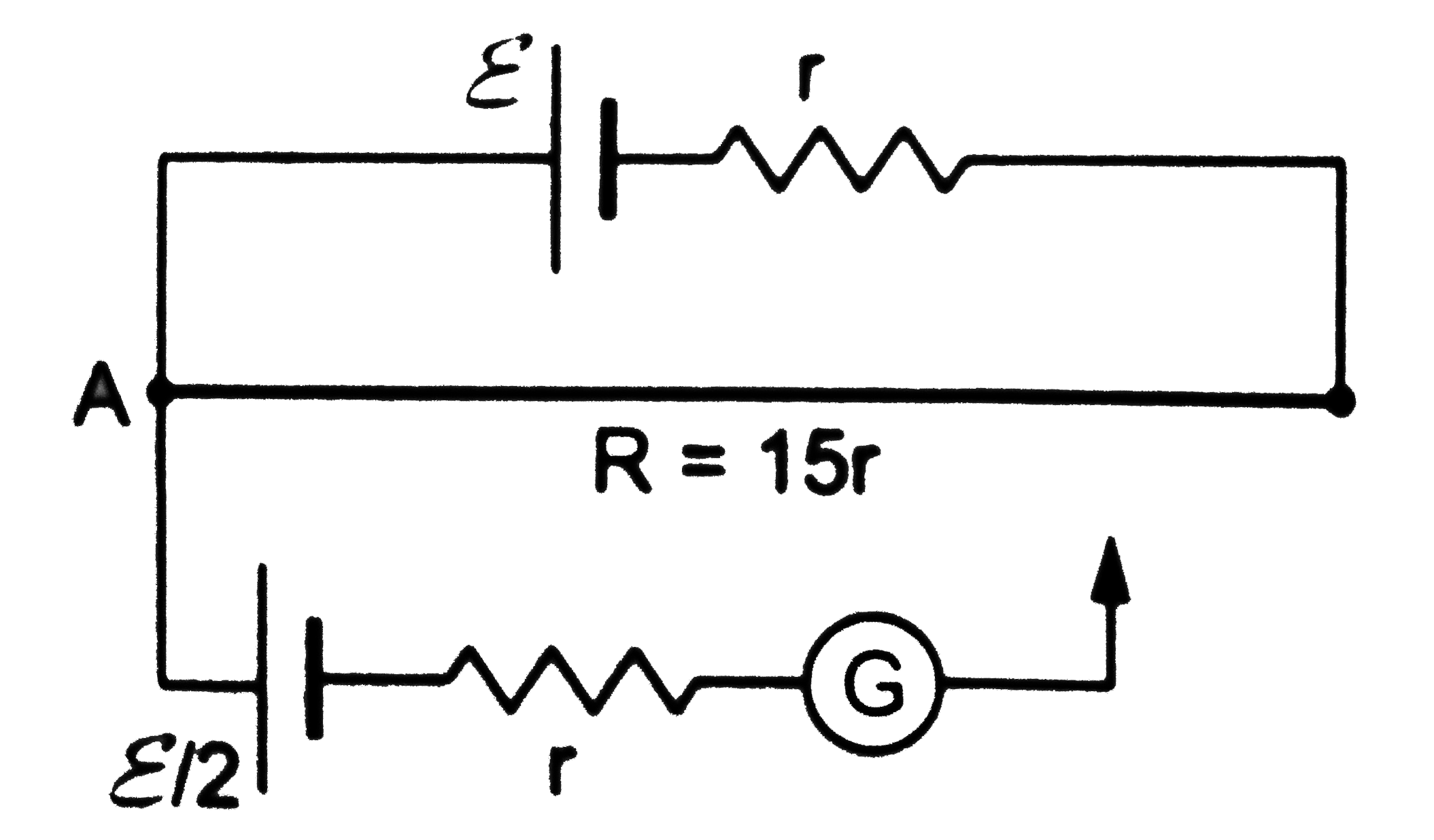
View SolutionThe potentiometer wire AB is 600 cm long. a. At what distance from A should be jockey J touch the wire to get zero deflection i the galvanometer. b. If the jockey touches the wire at a distance 560 cm from A, what will be the current through the galvanometer.
View SolutionIn the following circuit, resistance of potentiometer wire is 100 Omega . Power consumption in potentiometer wire is same when jockey is placed at 10 cm from end A or end B. Internal resistance of cell (r ) is
View SolutionA potentiometer wire AB as shown in 40 cm long of resistance 50Omega//m free end of an ideal galvanometer is touching the potentiometer wire with the help of a jockey. What should be the velocity of the jockey as a function of time so that potential difference across the galvanometer is varying with time as (2sinpit)V
View Solution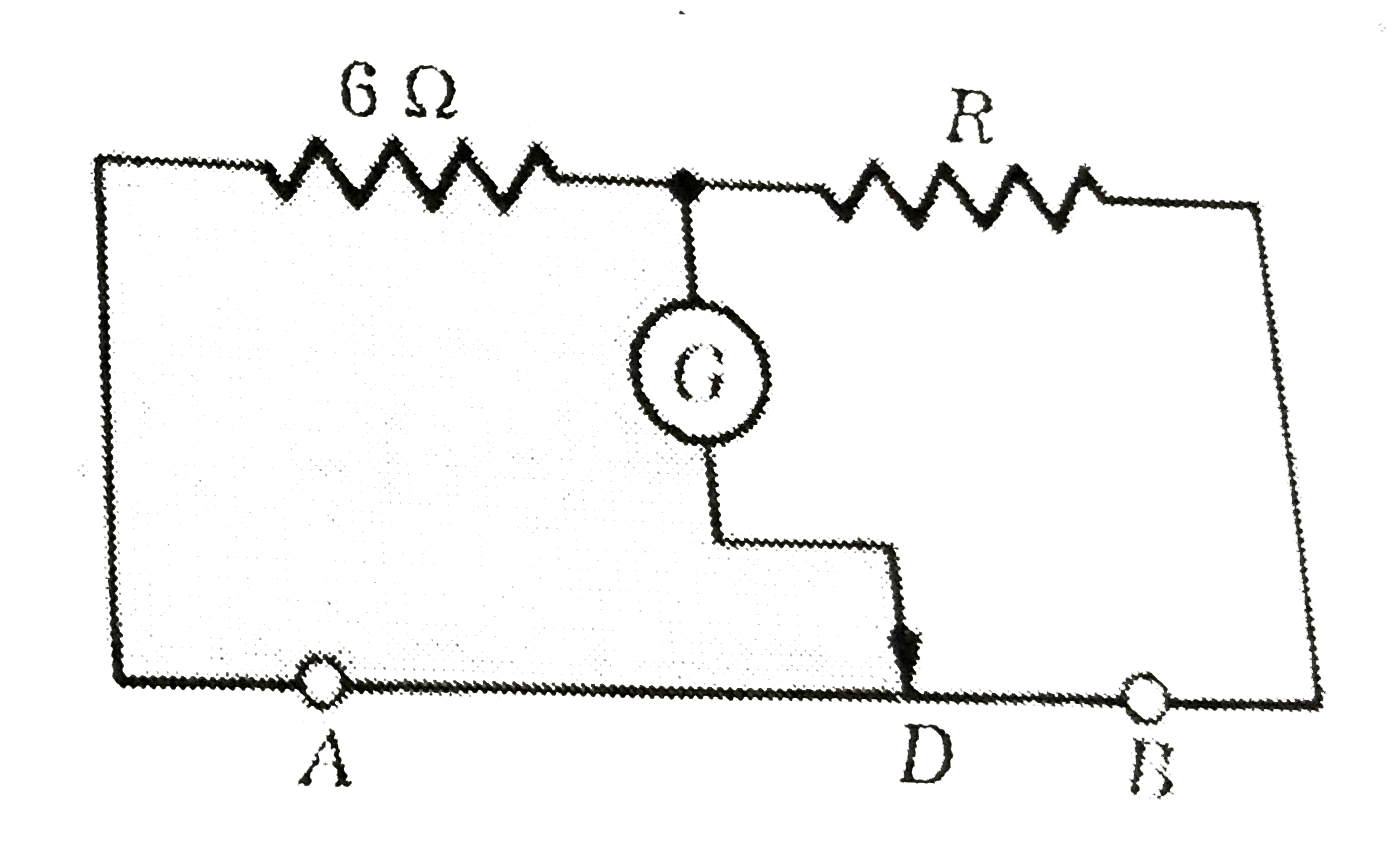
The potentiometer wire AB shown in figure. Is 50 cm long. When AD=30cm, no deflection occurs in the galvanometer. Find R
View SolutionA resistance of potentiometer wire is 1Omega//m . A Daniel cell of e.m.f. 1.08V balances at 216 cm on potentiometer. The current through wire is
View SolutionIn the circuit shown, a four-wire potentiometer is made of a 400 cm long wire, which extends between A and B. The resistance per unit length of the potentiometer wire is r=0.01Ω/cm. If an ideal voltmeter is connected as shown with jockey J at 50 cm from end A, the expecteed reading of the voltmeter will be _______ volts.
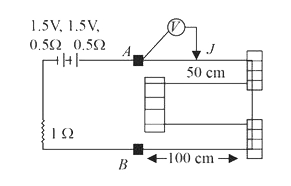
View SolutionThe potentiometer wire AB is 600cm long. At what distance (in cm) from A should the jockey J touch the wire to get zero deflection in the galvanometer?
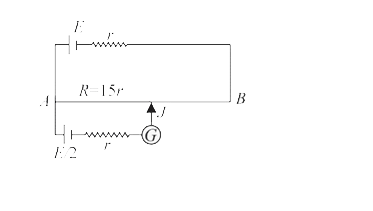
View SolutionThe length of the potentiometer wire is 600 cm and a current of 40 mA is flowing in it. When a cell of emf 2 V and internal resistance 10Ω is balanced on this potentiometer the balance length is found to be 500 cm. The resistance of potentiometer wire will be
View SolutionConsider the potentiometer circuit arranged as in figure. The potentiometer wire is 600cm long. At what distance from the point A should the jockey touch the wire to get zero deflection in the galvanometer? b) If the jockey touches the wire at a distance of 560cm from A, What will be the current in the galvanometer?

View SolutionIn the circuit shown, a four-wire potentiometer is made of a 400cm long wire, which extents between A and B . The resistance per unit length of the potentiometer wire is rL=0.01Ω/cm. If an ideal voltmeter is connected as shown with jockey J at 50 cm from end A, the expected reading of the voltmeter will be :
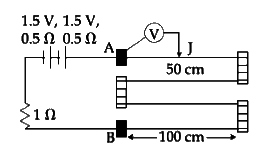
View SolutionThe potentiometer wire AB is 600 cm long. a. At what distance from A should be jockey J touch the wire to get zero deflection i the galvanometer. b. If the jockey touches the wire at a distance 560 cm from A, what will be the current through the galvanometer.
View Solution

